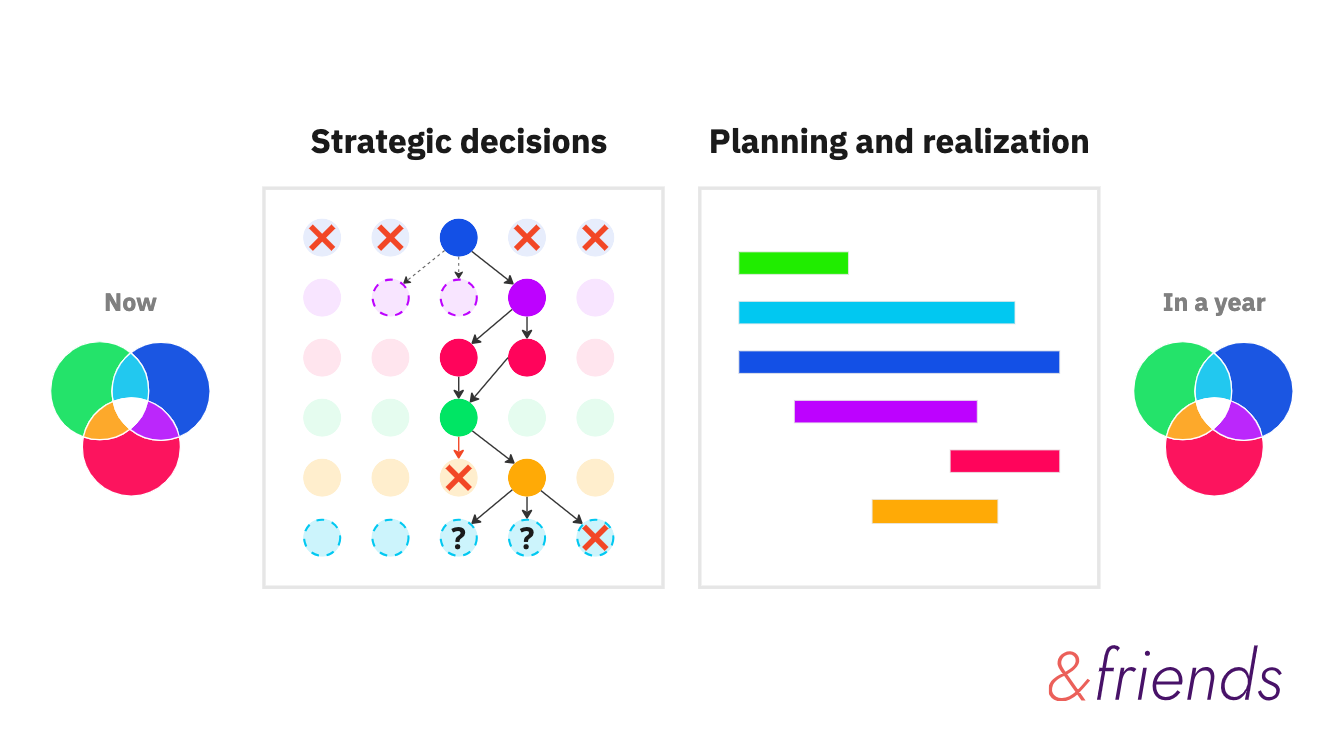When I do mapping, I like to integrate the 4th dimension: time. When doing co-creation activities, it’s important to specify the timeline. Are we talking about the present or the future? And if I’m using an old map, when is it from? Is it still valid? Always be explicit about the “moment in time.” This will save you from many misunderstandings.
Using tags is also essential. As mentioned in a previous article, to choose the right path, you must always have an idea of the traffic, one-way streets, and construction. Red to indicate that things are not going well, orange to signal that it’s not critical but there’s an issue, and green to say everything is okay! You can add nuances and text to accompany this, but these indicators are crucial for planning.
But planning from where to where? Having a current state assessment is your starting point. Using the red, orange, and green indicators, you need to determine what you want to improve. Don’t try to fix everything at once. Choose a few elements that will have the most impact in your context.

But planning from where to where? Having a current state assessment is your starting point. Using the red, orange, and green indicators, you need to determine what you want to improve. Don’t try to fix everything at once. Choose a few elements that will have the most impact in your context.
Generally speaking, a strategy helps you navigate effectively toward a goal, taking into account the realities on the ground and the organization's capabilities. However, strategy is not the same as a game plan. Strategy is about why we choose to engage in a certain area, what actions we decide to take, and what we consciously choose to exclude. To make those decisions, we need to create options. Only then can you determine how to achieve your goal.
I won’t list the various ways to find new ideas or innovate, but what I want to share here is that you should track your choices along the way, like leaving breadcrumbs. Few plans hold up in their entirety. In fact, the only constant in all plans is that they never unfold exactly as intended. A strategy, by its nature, cannot fully predict the outcome. It is uncomfortable. It is a theory we create that says, 'If we do this, we should achieve that.' So when things do not go according to plan, you need to return to where your strategy broke and make a new choice.
Now that you have your strategy, it’s time to plan how you will implement it. The planning phase is more comfortable because it mostly involves factors you control. And yes, you can even use EDGY to create a Gantt chart. The key is to carefully plan people’s involvement and actions over a long period. It’s easy to overlook the artistic direction of a digital project that spans three years or to forget that the people who will carry out the project need to be hired in advance—and all of this takes time. The goal is to ask the right questions to help us move from our 'current state' to our 'future state' without too many hiccups or oversights.

In the next article, I will bring together everything I’ve shown you into a tool I call the Compass. It’s a small overview that will help you better navigate your organization.
If you want to learn more, check out Jean-Sébastien's talk at the Intersection 24 conference and his LinkedIn page.
Did you like this blog post? Never miss an update when we publish next:
ENTERPRISE DESIGN PATTERNS
Capturing a wealth of experience from many sources, four world-class enterprise designers and architects present a collection of 35 immediately applicable solutions to successful enterprise design.
Buy the book